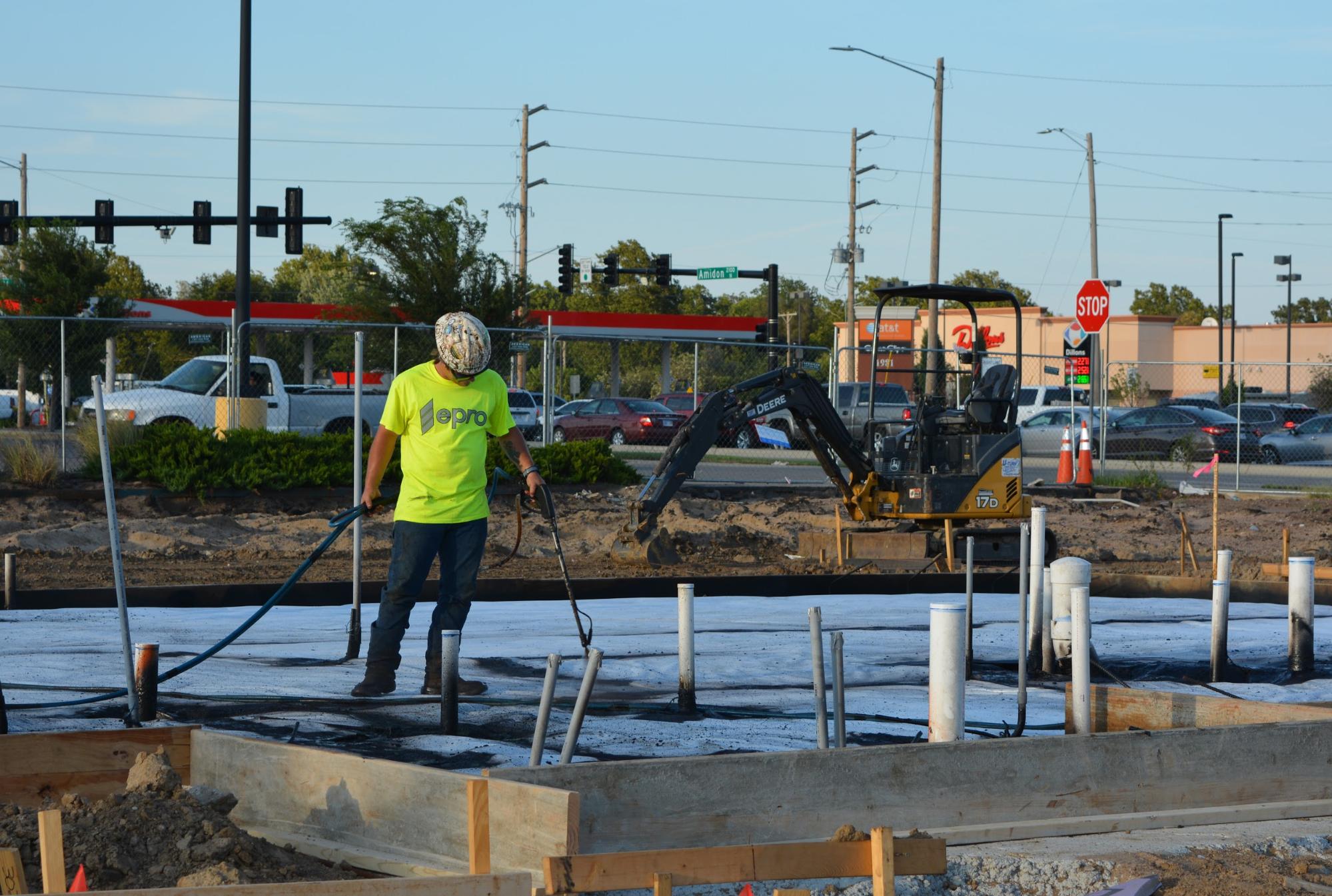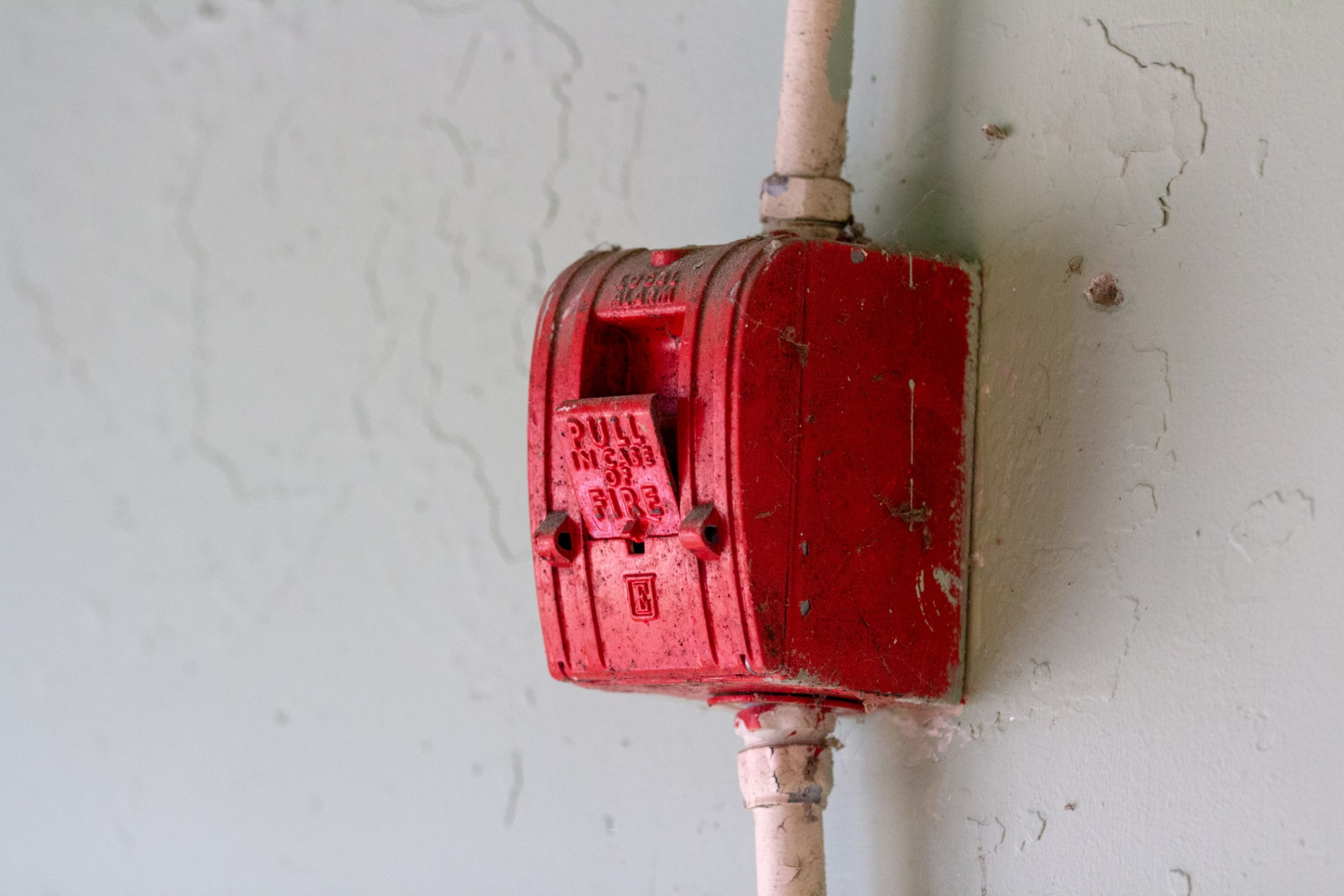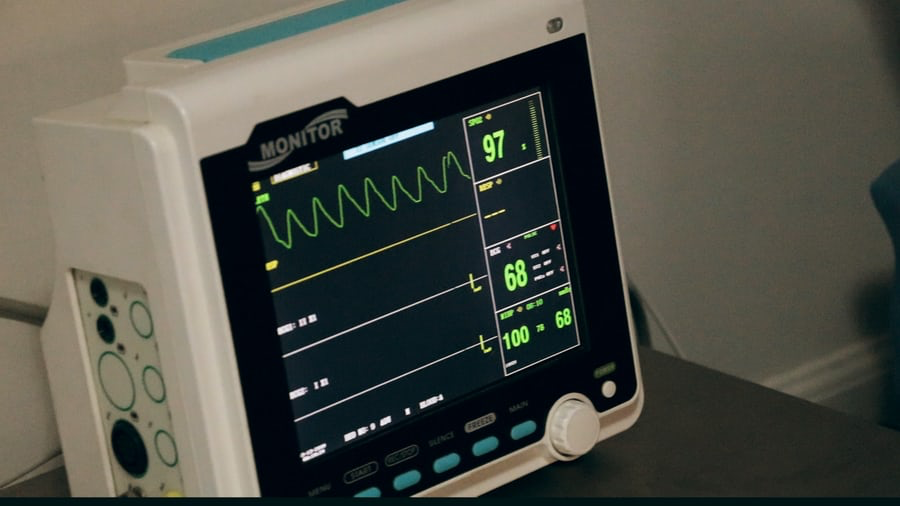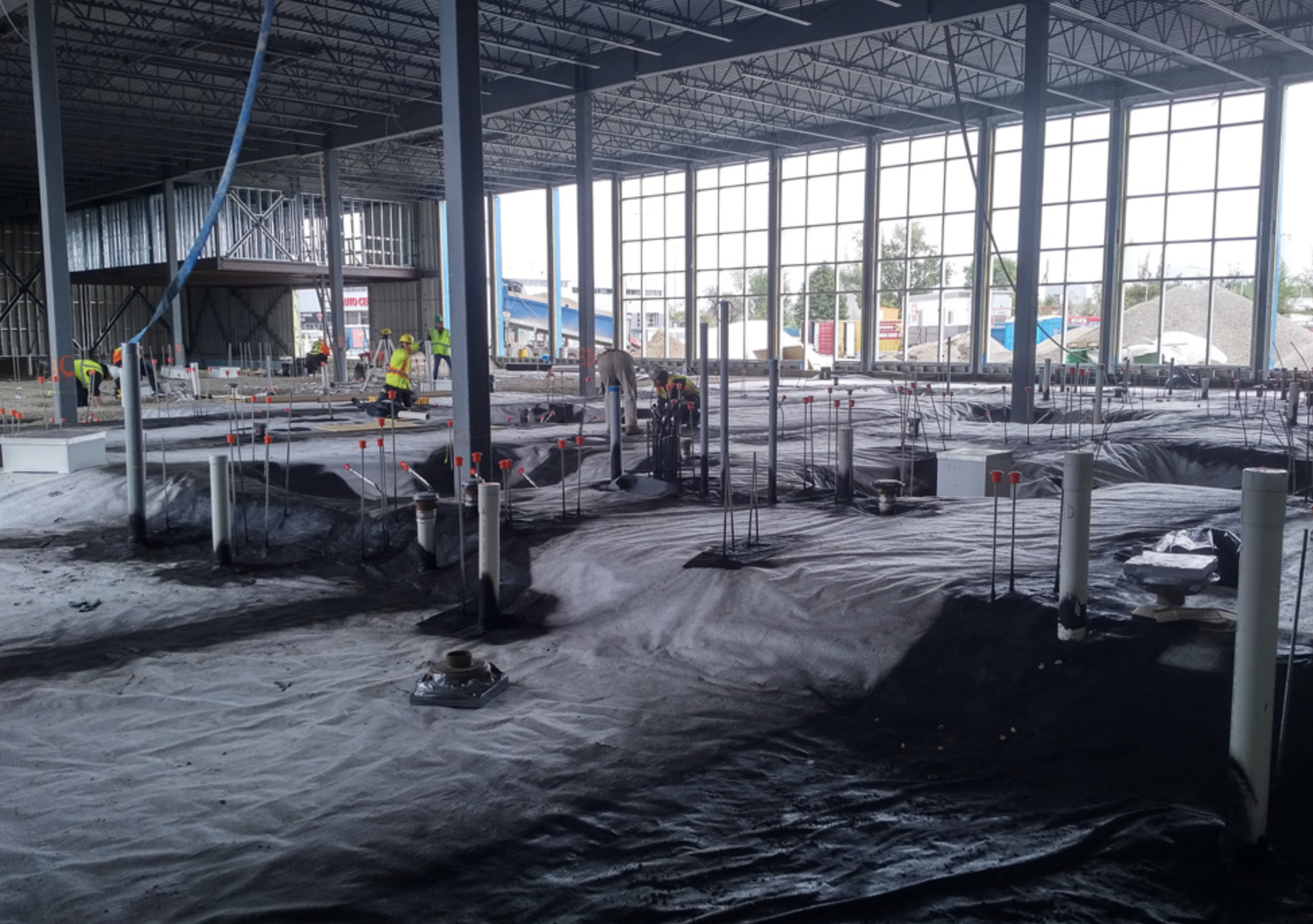
Environmental health and safety is an increasing concern for architects, developers, contractors and governments. Recently, attention has turned towards vapor intrusion as a critical issue that should be addressed in order to safeguard the health and well-being of our communities.
What Is Contaminated Vapor Intrusion?
Vapor intrusion is caused by contaminated land or soil. Chemicals will convert or volatilize into vapor.
When buildings are constructed where there is contaminated soil or groundwater, vapor intrusion may occur when these contaminants migrate from the subsurface into the overlying building. According to the EPA, vapor-forming chemicals of concern may include:
- Volatile Organic Compounds (VOCs) (e.g. trichloroethylene (TCE), tetrachloroethylene (PCE), benzene)
- Certain semi-volatile organic compounds (e.g. naphthalene)
- Elemental Mercury
- Certain polychlorinated biphenyls and pesticides
Additionally, gases such as radon and methane can also create a vapor intrusion condition that can impact human health.
Vapor intrusion mitigation is possible, however, through building design, construction and maintenance interventions.
Potential Vapor Intrusion Issues:
Vapor intrusion can cause a range of health and safety concerns:
1. Risk of fire or explosion
Vapor intrusion can increase the risk of fire or explosions occurring in the home. While this is rare, build-ups of methane gas or petroleum products can ignite or explode under certain conditions.

Source: Unsplash
2. Acute Symptoms
Residents may experience acute health symptoms as a result of vapor intrusion, such as headaches, nausea, itchy eyes or throat irritation.
3. Cancer risks
Vapor intrusion first rose to national prominence in the 1980s, when the link between lung cancer and radon was identified. According to the EPA, radon is the number one cause of lung cancer for nonsmokers and contributes to over 20,000 deaths annually. Additionally, Benzene and TCE vapor are known carcinogens in humans.
4. Risks for vulnerable populations
The health impacts of vapor intrusion are particularly high for young children, the elderly, pregnant women and people with pre-existing chronic illnesses. For example, vapor intrusion has been linked to cardiac defects and low birth weights due to maternal exposure. Vapor intrusion, therefore, puts at risk already vulnerable people and can present additional challenges for public health.
5. Long-term impacts
While research into the long-term impacts of vapor intrusion continues, there is evidence that long-term exposure to some contaminants can impact cognitive and motor function, play a role in various types of cancer, cause damage to the liver and kidneys and damage immune function. Evidence also suggests that even low levels of exposure over a long period of time may cause neurological issues.

Source: Unsplash
6. Reduced livability
While health concerns are naturally the most pressing impacts of vapor intrusion, the presence of chemicals in the home can also simply make it a less pleasant place to live. If certain chemicals are present, for example, , residents may complain of unpleasant odors if chemicals like hydrogen sulfide are present. These factors can make a building or unit less desirable and may lead to difficulties in selling or renting.
7. Building development challenges
Vapor intrusion can present challenges when developing brownfield sites. Potential sources of contamination can be due to former gas stations, dry cleaning contamination, or manufacturing situated on the land. If not properly contained the residual vapors can affect the eventual property value as well as the health of future occupants.
Vapor intrusion mitigation should be a key consideration for any development on land with former chemical activity.
Vapor Intrusion Mitigation

Vapor intrusion enters a structure via a pathway where gases migrate from the substrate into the building through gaps in the building’s foundation or basement walls. Common examples include cracks in concrete slabs or gaps around utility lines. Vapors may also pass through concrete because of its naturally porous properties. This is known as advective flow. Vapors may also migrate via diffusion which occurs when contaminant vapor moves from high concentrations under the building foundation into the indoor environment.
There are a number of approaches to vapor intrusion mitigation, including remediation of the contaminant source, addressing cracks and gaps in existing structures, and physically removing vapor from under the building foundation though mechanical means.
If a site has known contaminants present through soil testing or other means, it is prudent to plan for vapor intrusion mitigation at the beginning of a building’s design. Contaminant vapor barriers offer protection against vapor intrusion through their installation in the substrate to prevent the migration of harmful gases into the building.
EPRO has extensive experience in providing the right solution to meet the demands of a given project. These include:
Vapor Impermeable Waterproofing Barrier
Formed by using a geo-membrane, spray applied asphalt membrane, and a bentonite liner, this waterproofing barrier is a multi-layered sheet system that self-seals and expands. In addition to creating a high-performance waterproof system, it is also contaminant vapor impermeable.
Past and potential applications include almost all below-grade concrete structures — this may include free-standing walls, under slabs, tunnels, elevator pits, as well as blindside applications such as lagging, caissons, sheet pile and shotcrete retention system.
Fluid-Applied Vapor and Water Barriers
EPRO's E.Protect+ underslab protection system provides the highest level of below-grade building protection available. Designed for waterproofing and vapor intrusion, it combines three layers into one system for ultimate protection against hydrostation conditions, chlorinated VOCs and petroleum hydrocarbons.
The system is designed for buildings that require the highest level of performance, and is compatible with all building foundation types, including pile, pad, mat, strip footings, grade beams, and buildings with moisture-sensitive flooring or finishes.
E.Protect+ consists of three layers: e.base 316, e.spray and e.shield 205b. Click here to learn more about this high-performance composite system.
Vapor Intrusion Barriers
EPRO offers several options for vapor intrusion barriers, which can eliminate vapor intrusion for brownfields or any evnironmentally-impaired sites, all in the Geo-Seal® product line.
Geo-Seal® 100 is a redundant composite vapor intrusion system that consists of three layers: Geo-Seal® BASE, Geo-Seal® CORE (60 mil) and Geo-Seal® BOND. Geo-Seal® 100 can withstand the rigors of your construction site, providing high puncture resistance and robust seals around penetration and terminations.
Geo-Seal® EV80 is a slightly thinner (but still thick at 79 mils) composite membrane system. It is ideal for projects where you are willing to compromise on total system thickness and some barrier durability but still desire a highly chemically resistant barrier. And it also consists of three layers: Geo-Seal® EV30, Geo-Seal® CORE and Geo-Seal® BOND.
Geo-Seal® 60 is a cost-effective alternative to Geo-Seal® 100 and Geo-Seal® EV80. It provides more resistance to construction traffic than a simple single sheet membrane, as well as more robust seals around penetrations and terminal points — all at a similar price point to single sheet membranes. It also consists of three distinct layers: Geo-Seal® FILM 11, Geo-Seal® CORE and Geo-Seal® BOND.
As always, ERPO’s team of experts are on hand to answer your question about vapor intrusion and to collaborate with you on your project. Contact us today to learn more about our vapor intrusion mitigation solutions.
